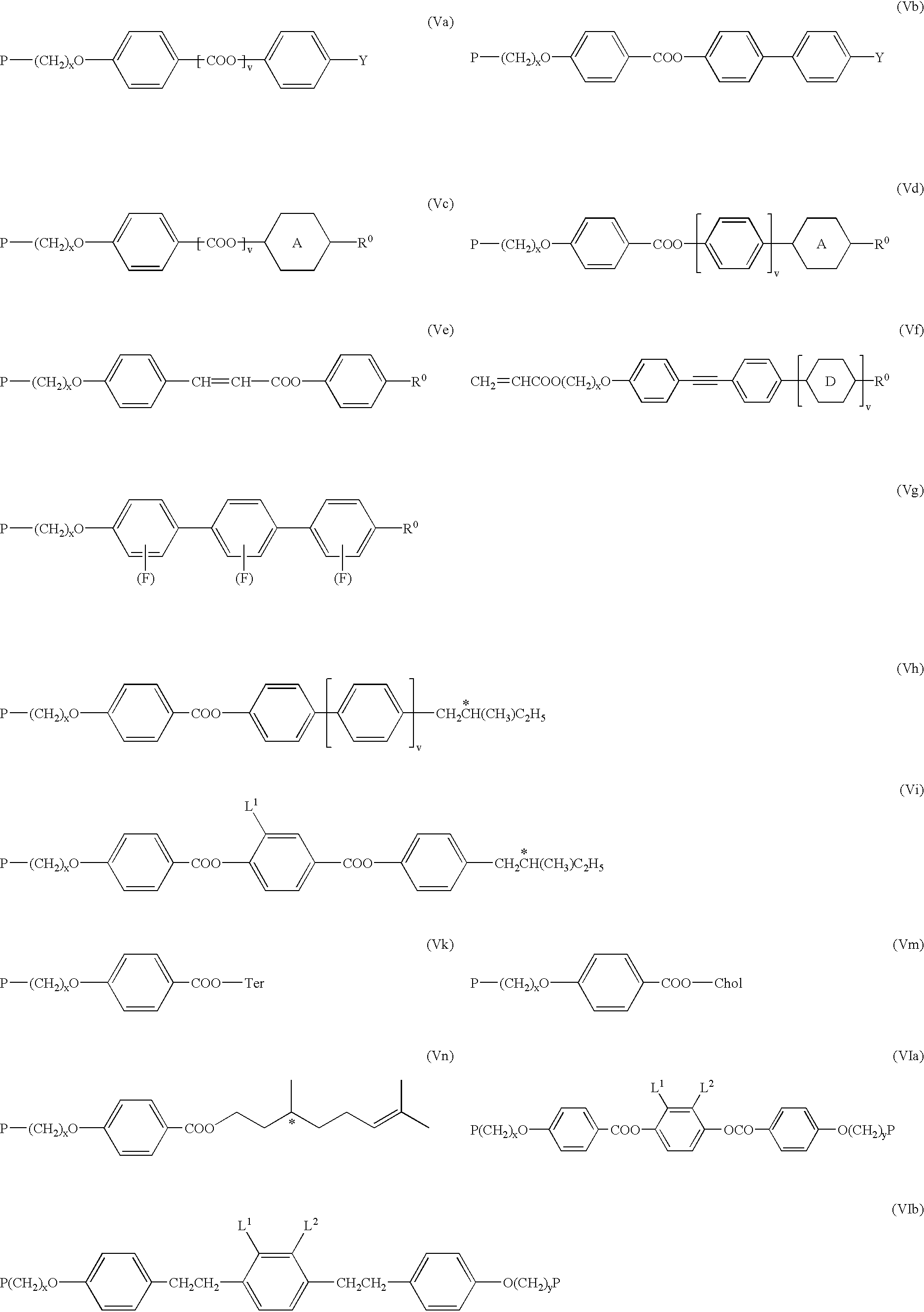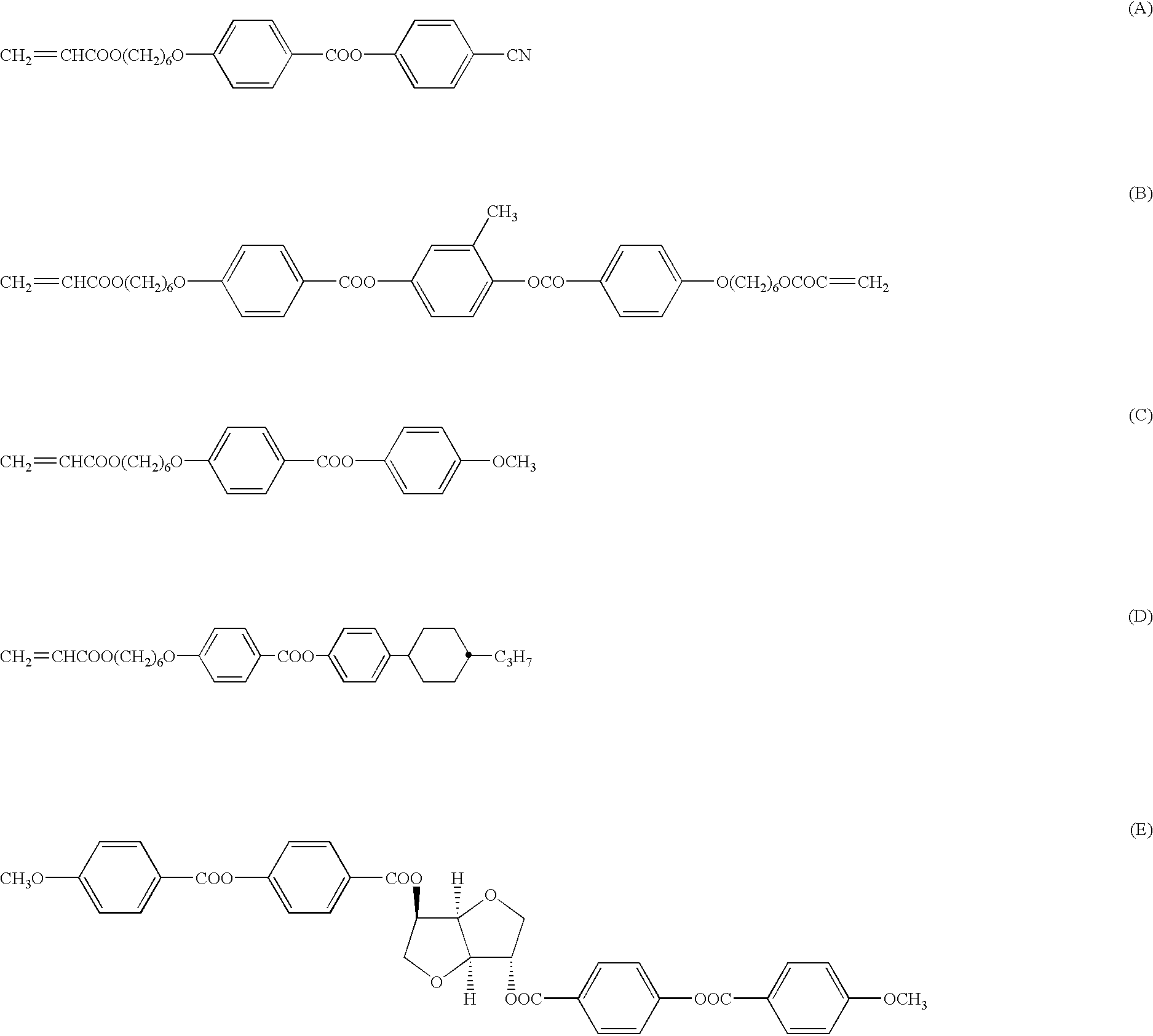Optically variable marking
a technology markings, applied in the field of optically variable markings, can solve the problems of the clc layer's reflection colour shifting to shorter wavelengths, devices described in prior art,
- Summary
- Abstract
- Description
- Claims
- Application Information
AI Technical Summary
Benefits of technology
Problems solved by technology
Method used
Image
Examples
Embodiment Construction
[0073] The following polymerisable CLC mixture is prepared
[0074] compound (A) 32.60%
[0075] compound (B) 3.00%
[0076] compound (C) 30.16%
[0077] compound (D) 29.56%
[0078] compound (E) 3.59%
[0079] Irgacure 651 1.08% 2
[0080] The polymerisable mesogenic compounds (A), (B) and (C) can be prepared according to or in analogy to the methods described in D. J. Broer et al., Makromol.Chem. 190, 3201-3215 (1989). The polymerisable mesogenic compound (D) and its preparation are described in GB 2,280,445. The chiral dopant (E) and its preparation are described in WO 98 / 00428. Irgacure 651 is a commercially available photoinitiator (Ciba Geigy).
[0081] The mixture is coated onto the PET side of a metallised PET film and polymerised by irradiation with UV light. Preferably the PET is darkened to about 95% absorbance. The coated structure is then exposed to laser light (Nd-YAG laser,1064 nm, 100 W) through the coating, and the aluminium coating is removed from the film only in the places exposed to la...
PUM
| Property | Measurement | Unit |
|---|---|---|
| thickness | aaaaa | aaaaa |
| thickness | aaaaa | aaaaa |
| thickness | aaaaa | aaaaa |
Abstract
Description
Claims
Application Information
 Login to View More
Login to View More - R&D
- Intellectual Property
- Life Sciences
- Materials
- Tech Scout
- Unparalleled Data Quality
- Higher Quality Content
- 60% Fewer Hallucinations
Browse by: Latest US Patents, China's latest patents, Technical Efficacy Thesaurus, Application Domain, Technology Topic, Popular Technical Reports.
© 2025 PatSnap. All rights reserved.Legal|Privacy policy|Modern Slavery Act Transparency Statement|Sitemap|About US| Contact US: help@patsnap.com


